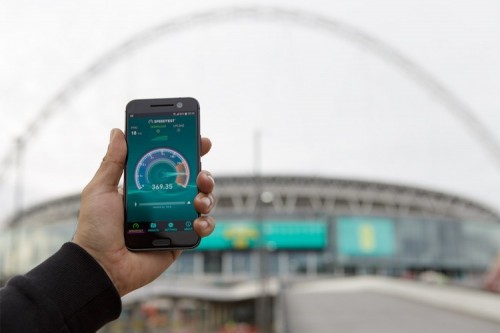EE is planning to switch on more than 500 sites supporting tri-band carrier aggregation by the end of next year, supporting recently launched Category 9 devices.
Smartphones such as the HTC M10, Samsung Galaxy S7 and S7 Edge all support the technology, which gives lab speeds of 450MBps. EE is aggregating 20MHz of 1800MHz spectrum, as well as a total of 35MHz in its 2.6GHz holding.
EE said it was able to reach speeds of 360MBps on its network at Wembley Stadium in London by connecting an HTC M10 to the latest iteration of its network.
In addition to the tri-band network going live at Wembley, EE said it will switch on the technology at other sites in central London this year, including at Tech City.
EE CEO Marc Allera said: “There’s no point having the latest smartphones on a network that can’t support the top speeds the device is capable of. We’ve invested in our network to ensure that all of our customers get the most out of the amazing smartphones they have, and can keep up with the highest speeds that the latest devices offer. With 4G+ now supporting Cat 9 devices, plus Wi-Fi Calling and 4G Calling, customers on EE will continue to get more from their new smartphone than on any other network in the UK.”
In April, EE said it wanted to improve its coverage across the landmass of the UK. While 95 percent of the country’s population can currently access LTE services, this only covers 60 percent of the country’s area.
The operator wishes to build a further 750 sites to support its network rollout but has called for a relaxing of the UK’s planning laws in order to improve mobile services.



